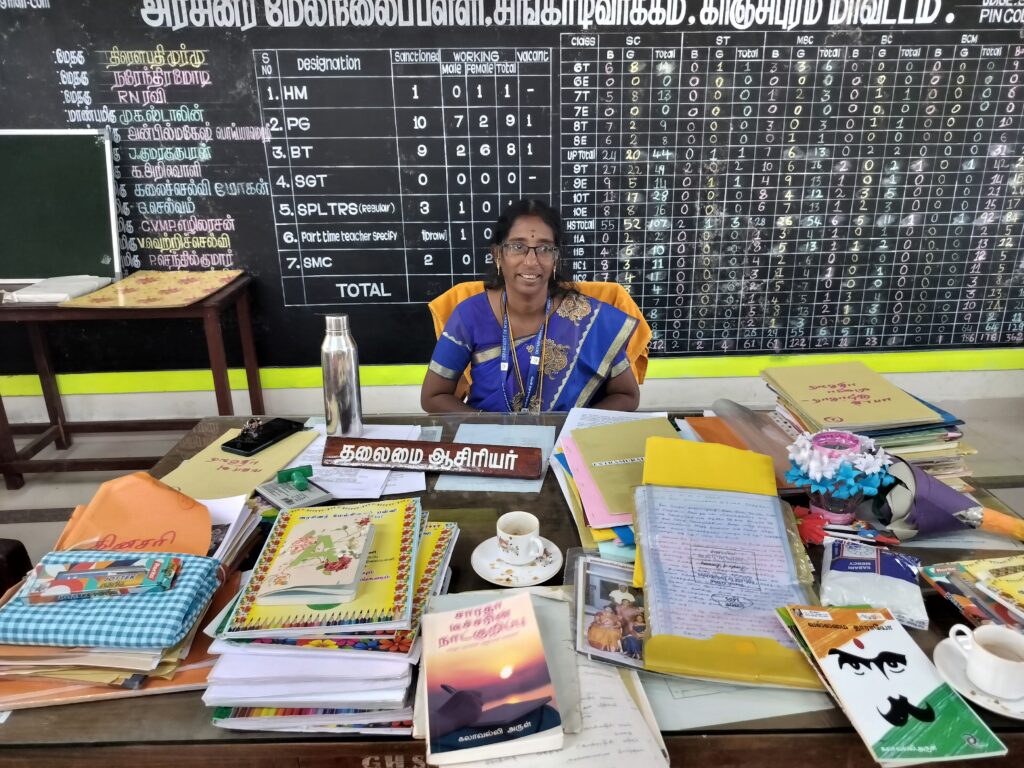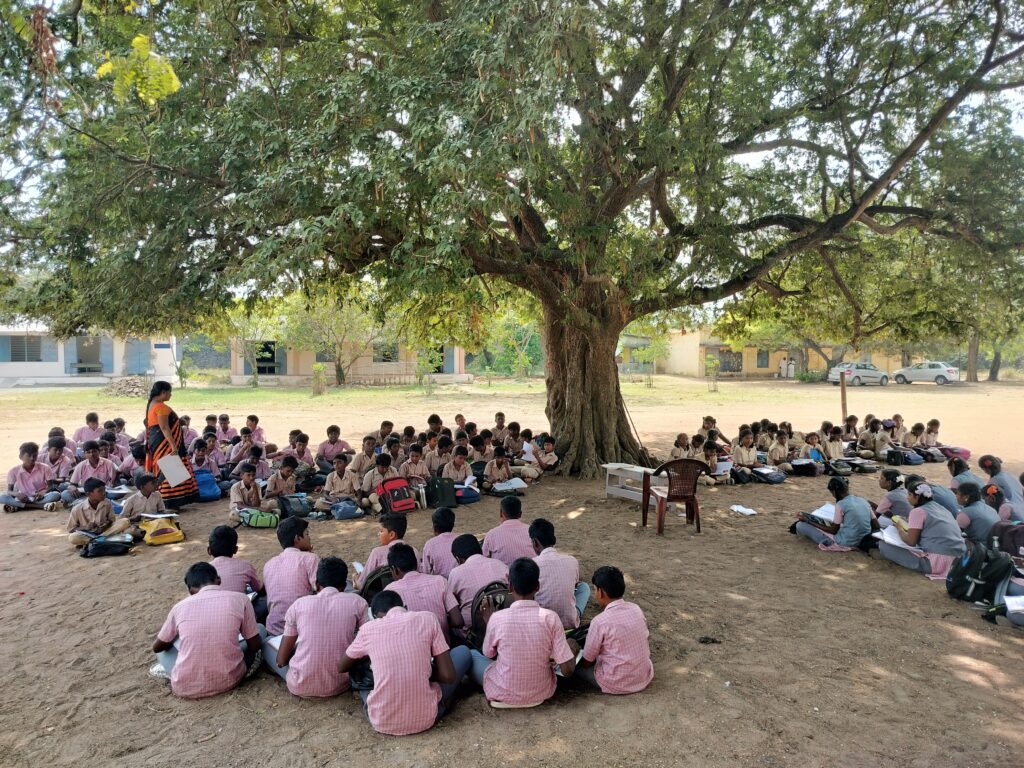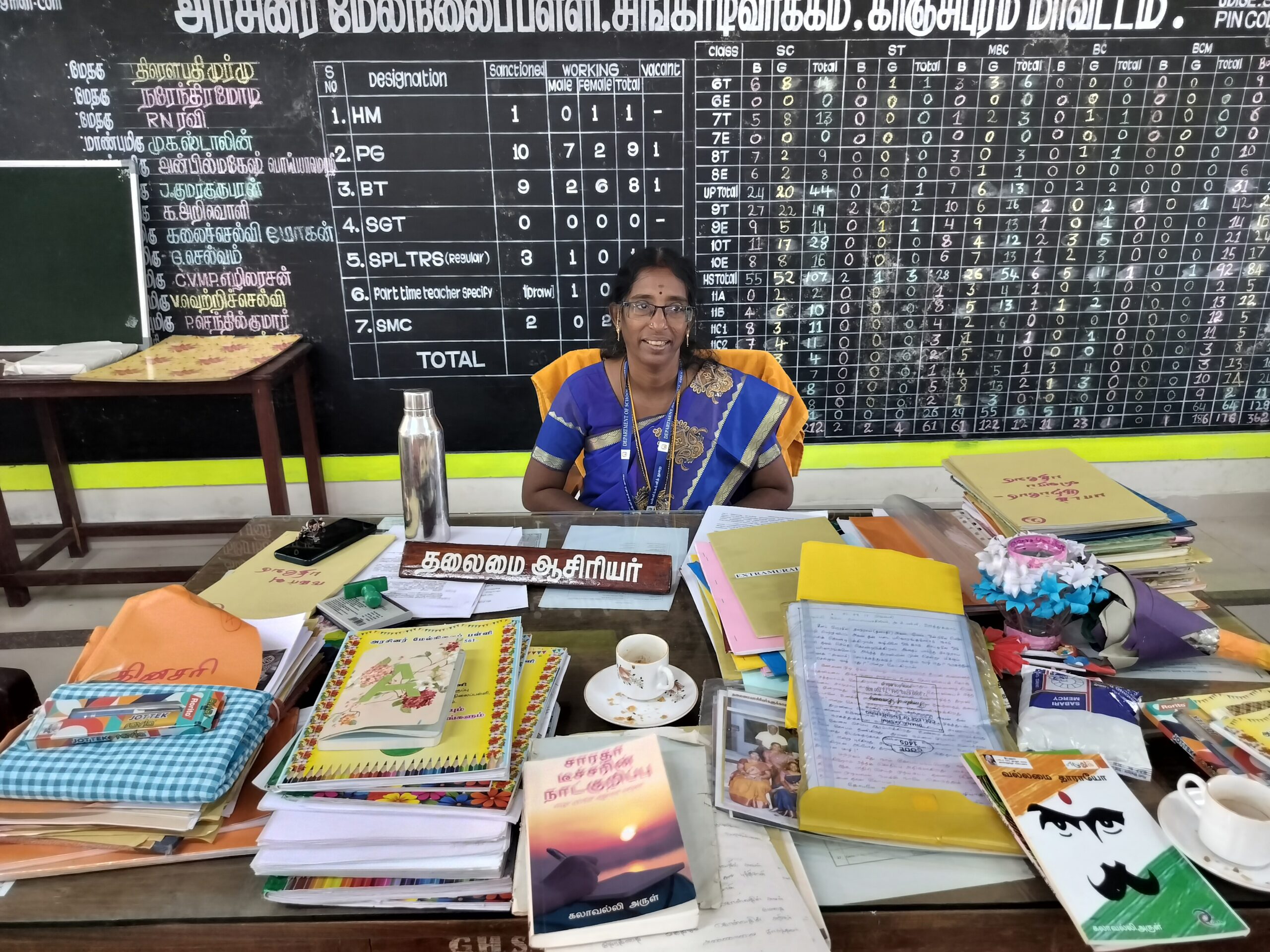Leading through Reflection: The Inspiring Journey of HeadTeacher Kalavalli
Gowthama Rajavelu

During a routine school gathering, Head teacher Kalavalli was speaking to students about the importance of respect. As she was talking, a few students began whispering, disrupting the session. Irritated, Ms. Kalavalli shouted at one of the boys. To her surprise, the boy confronted her, saying, “You are talking about respect, but now you’re humiliating me in front of everyone.” His words hit her hard. As the other teachers rushed to scold the boy for his attitude, Ms. Kalavalli paused. That moment of reflection led her to realise that she, too, had failed to live by the values she was preaching.
A few days later, in front of the entire school during assembly, Ms. Kalavalli spoke about forgiveness. She called the boy on stage, apologised, and asked for his forgiveness, demonstrating what it truly means to practise humility and respect. Inspired by her leadership, students followed her lead, apologising to their peers and teachers. Even the teachers participated, some asking forgiveness from students. This moment created a profound shift in the school’s atmosphere, where everyone—students and staff alike—understood that true respect begins with reflection and taking responsibility.
This incident is just one example of how Ms. Kalavalli leads through empathy, reflection, and action. As headteacher in one of the rural villages of Tamil Nadu, she has dedicated herself to creating an environment where students and teachers thrive both emotionally and academically. Her leadership style is deeply rooted in fostering intrinsic motivation—something she had long practised. She was also part of the Managing through Motivation session, delivered as part of the HM leadership training where the Centre for Intrinsic Motivation (CIM) partnered with the school education department. In her school, this approach goes beyond academics.


One of Ms. Kalavalli’s priority is ensuring the emotional well-being of her students. Understanding that many children struggle with stress and anxiety, she introduced a unique initiative—a punching bag hung in the school corridor. Students are encouraged to punch or kick the bag whenever they feel overwhelmed, helping them release their emotions in a healthy way. This simple act of care has made a significant difference in how students manage their stress.
For adolescent girls, she created a safe space for open dialogue. She regularly holds private meetings with higher secondary girls, offering them a platform to discuss personal challenges and receive guidance. By acting as both a mentor and a friend, the Head teacher has empowered many young girls to navigate adolescence with confidence and support.
Ms. Kalavalli also recognized that many students were spending excessive time on their mobile phones or grooming themselves during breaks. Instead of reprimanding them, she took a different approach. She installed mirrors in the school verandah, encouraging students to quickly freshen up and return to class on time. Students felt acknowledged and respected, and class punctuality improved.
To further engage students, she introduced Talent Magazines, where students contribute drawings, stories, and even recipes. These magazines are celebrated during school assemblies, with students honoured for their creativity. This initiative not only reduced screen time but also gave students a sense of pride in their work.
Ms. Kalavalli’s leadership style extends beyond her students—she is equally committed to empowering her teachers. One of the teachers shared how the head teacher encouraged him to organise a Tamil Koodal event aimed at celebrating Tamil literature. She gave him complete autonomy to plan and execute the event, allowing him to showcase his full potential without interference. The event became one of the most successful Tamil Koodal programs in the district, a testament to her belief in giving teachers the freedom to take ownership of their work.
Her leadership has transformed the school’s culture, where teachers now feel comfortable approaching her for guidance. The head teacher promotes an open-door policy, creating an atmosphere of collaboration and trust.
Ms. Kalavalli’s leadership emphasises peer collaboration among teachers. She encourages them to share ideas, offer feedback, and reflect on their teaching practices. By fostering this culture of continuous improvement, she ensures that the school remains a place where both students and teachers are constantly learning and growing.
Ms. Kalavalli ’s leadership has transformed the school into a place of respect, empathy, and learning. Whether she is helping a student manage stress, empowering a teacher to take charge of a major event, or reflecting on her own actions, her commitment to creating a positive and supportive environment is unwavering.
Through her work, she reminds us that leadership is not about authority—it’s about reflection and compassion. Under her guidance, both students and teachers are thriving, creating a legacy that will inspire future generations.



